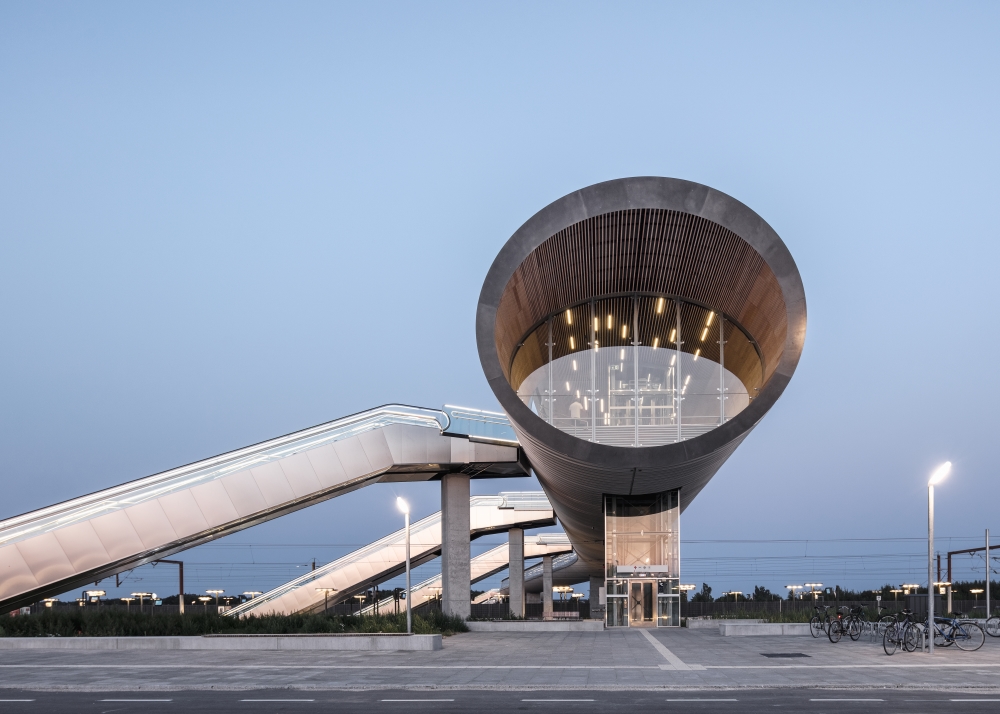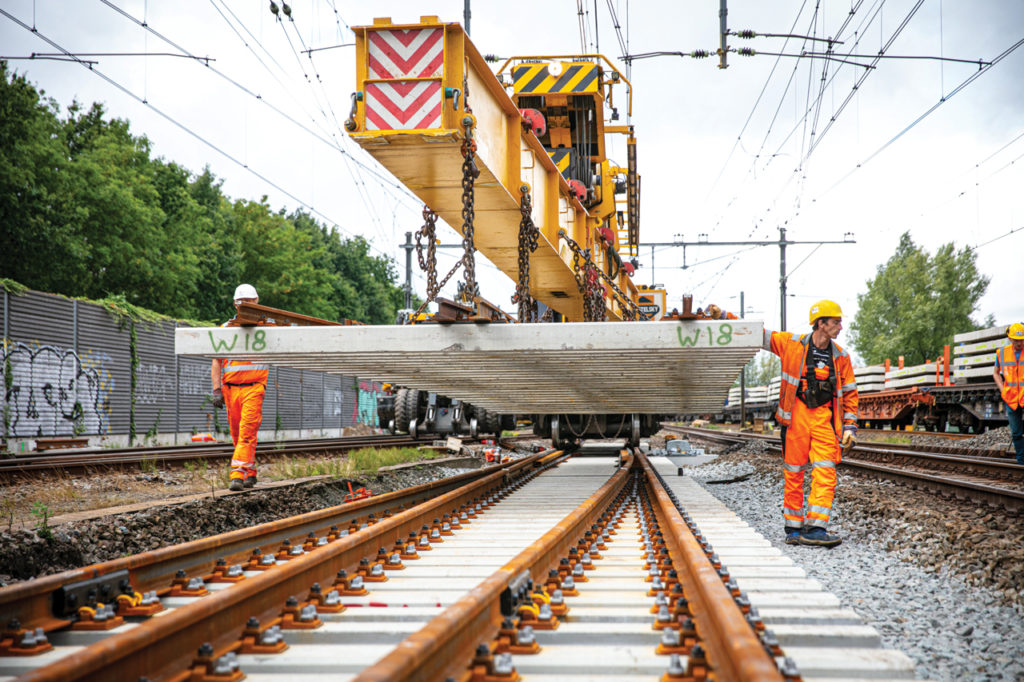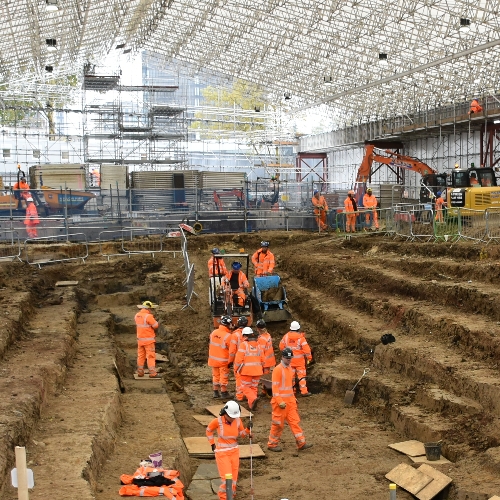Infrastructure and Stations
Stations Infrastructures Asset Management ResilienceStations

Objective
In Europe, some infrastructure managers (IM) own or operate stations. In some cases, the operational part of station management is delegated to another entity, which could also be a railway undertaking. EIM’s IM members who manage stations are keen to share knowledge and experience with European peers on topics such as station management, development and operations, as well as on critical and strategic issues (e.g. security, digitalisation and multimodality).
EIM in action
- EIM’s Stations Working Group shares information and best practice relevant to stations. The WG focuses on the status and application of standards for stations and on the division of responsibility for platforms;
- EIM monitors the relevant legislation affecting stations (e.g. safety, PRM, capacity, etc) and triggers its members’ input when needed.
2020
- The WG conducted a survey to identify sustainability-related topics. In 2020, it exchanged on the following issues:
- the contribution of stations to the attractiveness of the railway system (to deliver greater modal shift);
- urban environment and construction activities.
- The WG discussed the impact of the pandemic on the effects of COVID-19 for station managers and on the use, operation and design of future stations.
Outlook 2021
- The WG will meet to exchange on:
- the latest impact of the pandemic on station management;
- the expectations regarding the return of passengers to the railway following COVID-19;
- investment projects involving the design and operation of stations.
- The WG will also launch a survey to benchmark the design requirements for station platforms.
Infrastructures

Objective
The 4th Railway Package and especially the Directive (EU) 2016/797 on the interoperability of the rail system within the European Union, require the adaptation of the network to European standards to allow a smooth circulation of trains in Europe. The first step for Infrastructure Managers (IMs) towards this goal is to follow the European requirements when renewing, upgrading or building new lines and stations. These requirements are stated in the Technical Specification for Interoperability on Infrastructure (TSI INF) (Regulation (EU) 1299/2014) to ensure the interoperability of the subsystem. IMs are committed to increase the capacity and efficiency of their rail infrastructure to the goal of the EU to shift 50% of medium distance passenger transport from road to rail, and to cut CO2 emissions in transport by 60% by 2050, as defined in the 2011 EU White Paper ‘Roadmap to a Single European Transport Area —Towards a competitive and resource efficient transport system’.
EIM in action
- EIM’s Infrastructures Working Group (INF WG) cooperates with the relevant peer group of CER.
- EIM aims at improving interoperability of the network by filling the gaps in the TSI INF in a cost-efficient way. The implementation of the TSI can be improved by sharing practical experiences with the new TSI.
2020
- EIM and its members support the EU Agency for Railways (ERA) in the revision of the TSI INF via technical experience;
- EIM’s INF WG takes part in ERA Topical Working Group “Interfaces between Rolling Stock and Fixed Installations” (TWG RST/FI Interface). This ERA TWG is working with 5 Change requests (CRs). These CRs are RST-INF interface related and mainly pointed out by ERA, not the INF sector.
- ERA considered the opinion of EIM’s INF WG during the closing of the open points in the TSI INF.
- EIM’s INF WG has continuously joint meetings with CER INF WG (EIM/CER INF WG) currently chaired by EIM’s INF WG. The reason for that is to gather infrastructure experts’ competence from both sector organisations in Europe and try to have joint opinions and joint change proposals to present to ERA.
- EIM submitted the joint EIM CER INF Change Requests within the ERA CCM Tool.
Outlook 2021
- EIM’s INF WG expects to start the discussions on the following topics:
- Amend the current gaps and errors in the TSI;
- Streamline the procedures for evaluation of conformity to evaluate conformity;
- Establish feasible provisions for the application of the TSI to existing lines;
- Define the relevant specifications to cover operation of combined transport.
- EIM’s INF WG experts will follow the ‘Topical Working Group’ created by ERA for the RST-INF interfaces that will manage the following issues:
- Harmonisation between Rolling Stock (LOC&PAS + WAG) and INF TSIs, including requirements on traffic loads and load carrying capacity of infrastructure (e.g. classification of L&P vehicles in accordance to EN 15528, performance parameters for passenger traffic – axle load);
- Technical analysis of the provisions of the INF TSI that could be relevant for upgrade and/or renewal of the INF subsystem;
- The outputs of CEN TC250 SC1 WG3 TG DIBRST and of Shift2Rail IP3.
- EIM will be involved in the revision of the ‘Infrastructures Working Party’ which will apply the new ‘Change and Control Management’ (CCM) process set up by the ERA.
- EIM will continue submitting the joint EIM CER INF Change Requests within the ERA CCM Tool.
Commission Regulation (EU) No 1299/2014
Asset Management

Objective
The efficient management of rail infrastructure assets, including the accurate forecast of related investment plans, are the cornerstone of the business of rail infrastructure managers (IMs). IMs are looking to maximize the ‘value for money’ of their operations to deliver benefits to funders and other stakeholders, and improve service delivery to customers through ever more efficient asset management. Efficient asset management is about obtaining the right balance between the cost of maintenance, renewal, traffic management and delivering excellent customer service and the revenue coming from commercial activities and subsidies.
EIM in action
- EIM’s permanent Working Group on “Asset Management” promotes the exchangeof information among IMs for evidence-based analyses and benchmarks of management practices for business performance improvements.
2020
-
The WG discussed:
-
asset management and green priorities, including IMs’ sustainability strategies related to asset management, energy measurement and invoicing;
-
measures taken by the IMs regarding the management of assets during the pandemic.
-
Outlook 2021
-
The WG has identified a list of 18 topics for exchange in 2021, including:
-
organisational challenges and digitalisation,
-
innovation and management improvements,
-
better performance planning,
-
environment and modal shift,
-
organisational matters.
-
Resilience

Objective
Degraded situations stemming from a lack of preparedness for extreme and unexpected events are an increasing concern, particularly as these events may affect the performance or lifespan of assets owned and operated by Rail Infrastructure Managers (IMs). This can have severe operational, financial, environmental and social consequences, hence the concept of ‘resilience’ is becoming an increasingly critical topic.
IMs ensure efficient rail operations through the development of dedicated resilience plans and processes covering the entire value chain of infrastructure management. Resilience aspects may include, among other things, climate change, technical failures, security issues and human errors.
EIM in action
- EIM’s Resilience Working Group exchanges information among IMs and acts as a platform for benchmarking of the main infrastructure ‘vulnerabilities’ as well as the respective ‘Business Continuity Plans’ in place.
2020
- Early in 2020, the EIM WG finalised the “online business continuity managementsurvey” amongst all EIM members and started working on the final report. However, this exercise was suspended in February 2020 due to the Crisis of COVID-19;
- From March to June 2020, the WG met weekly to exchange information on the business contingency plans and the measures taken by the IMs following the evolution of COVID-19. It also produced a weekly survey;
- Since September 2020, the WG organised biweekly calls on the evolution of the contingency measures and post lockdown plans.
Outlook 2021
-
The WG will continue its bi–weekly update calls on the contingency measures and post lockdown plans as necessary.
-
The WG will consider the possible continuation of the benchmarking exercise on Business Continuity Management in the post-COVID timeframe.